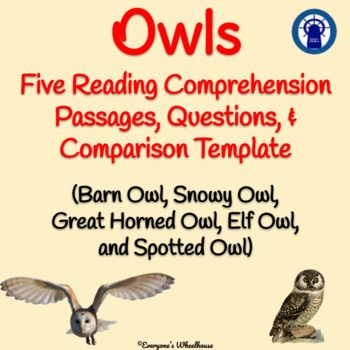Owls, those enigmatic nocturnal predators, hold a captivating allure for many. Their silent flight, piercing gaze, and haunting calls evoke a sense of mystery. You undoubtedly have questions about these avian wonders. This compilation addresses ten of the most frequently asked questions, providing insight into the natural history and unique adaptations of owls.
1. What defines an owl?
Several key characteristics delineate owls from other birds of prey. Perhaps the most prominent feature is the facial disc, a concave arrangement of feathers surrounding the eyes. This disc acts as a sound-collecting apparatus, channeling auditory information towards the owl’s asymmetrically placed ear openings. These offset ears allow owls to pinpoint the precise location of prey, even in complete darkness. Furthermore, owls possess zygodactyl feet, meaning two toes point forward and two point backward, providing a secure grip on branches and struggling prey. Most species boast fringed flight feathers, which disrupt airflow and facilitate virtually silent flight, a crucial adaptation for ambushing unsuspecting victims.
2. How many owl species exist?
Globally, ornithologists recognize over 200 distinct owl species, exhibiting a remarkable diversity in size, plumage, and ecological niche. From the diminutive Elf Owl, barely larger than a sparrow, to the imposing Eurasian Eagle-Owl, with a wingspan exceeding six feet, owls occupy a wide range of habitats across every continent except Antarctica.
3. What do owls eat?
The dietary habits of owls are as diverse as the owls themselves. While many species primarily consume small mammals like rodents and voles, others specialize in birds, insects, fish, or even reptiles. The Great Horned Owl, for instance, is an opportunistic predator, preying on a wide array of creatures, including skunks, rabbits, and even other owls. Some owls, like the Barn Owl, are particularly adept at controlling rodent populations, making them valuable allies in agriculture.
4. Where do owls live?
Owls are ubiquitous inhabitants of a wide spectrum of environments. They occupy dense forests, open grasslands, arid deserts, and even urban areas. The specific habitat preferences of an owl species are largely determined by the availability of suitable prey and nesting sites. Some owls, such as the Burrowing Owl, nest underground in abandoned prairie dog burrows, while others, like the Northern Spotted Owl, require old-growth forests with ample tree cavities for nesting.
5. Are owls nocturnal?
While many owls are primarily nocturnal, meaning they are most active at night, this is not universally true. Some species, such as the Northern Hawk Owl and the Snowy Owl, are diurnal, hunting primarily during the day. Crepuscular species, like the Short-eared Owl, are most active during dawn and dusk. The timing of an owl’s activity is often influenced by the availability of prey and the competitive pressures from other predators.
6. How do owls hunt in the dark?
Owls possess extraordinary adaptations for hunting in low-light conditions. Their large eyes contain a high concentration of rod cells, which are highly sensitive to light, enabling them to see exceptionally well in darkness. As previously mentioned, the facial disc acts as a parabolic reflector, amplifying and directing sound waves towards the ears. Furthermore, the asymmetrical ear placement allows owls to triangulate the precise location of a sound source, enabling them to strike prey with pinpoint accuracy, even when hidden beneath snow or vegetation. The silent flight granted by their specialized feather structure also prevents prey from detecting their approach.
7. What is an owl pellet?
Owls, unlike many other birds, do not possess a crop. Indigestible materials, such as bones, fur, and feathers, are compacted into a bolus within the gizzard, a muscular part of the stomach. This compacted mass, known as an owl pellet, is then regurgitated. Examining owl pellets provides valuable insights into an owl’s diet and the types of prey present in its habitat. Scientists and students alike often dissect owl pellets to identify the skeletal remains of small mammals, providing a fascinating glimpse into the local ecosystem.
8. How long do owls live?
The lifespan of an owl varies significantly depending on the species and environmental factors. Smaller owl species, such as the Screech Owl, may live for only a few years in the wild, while larger species, like the Great Horned Owl, can live for over 20 years. Owls in captivity often live longer than their wild counterparts due to the absence of predation and the provision of consistent food sources. Disease, habitat loss, and collisions with vehicles are significant threats to owl populations.
9. Are owls endangered?
The conservation status of owls varies considerably across different species and geographic regions. Some owl species, such as the Barn Owl, are relatively common and widespread, while others, such as the Northern Spotted Owl and the Blakiston’s Fish Owl, are threatened or endangered. Habitat loss, deforestation, and the use of pesticides are major factors contributing to the decline of owl populations. Conservation efforts, such as habitat restoration and the implementation of protective measures, are crucial for ensuring the survival of these magnificent birds.
10. How can I help owls?
There are numerous ways to contribute to the conservation of owls. Supporting organizations dedicated to owl research and conservation is a significant step. Protecting and restoring owl habitat, such as forests and grasslands, is essential. Avoiding the use of rodenticides, which can poison owls that consume poisoned rodents, is crucial. Installing owl boxes can provide suitable nesting sites for owls in areas where natural cavities are scarce. Finally, educating others about the importance of owl conservation can help raise awareness and inspire action.
